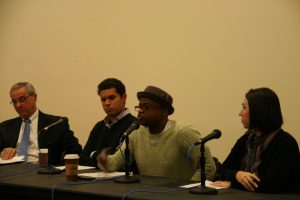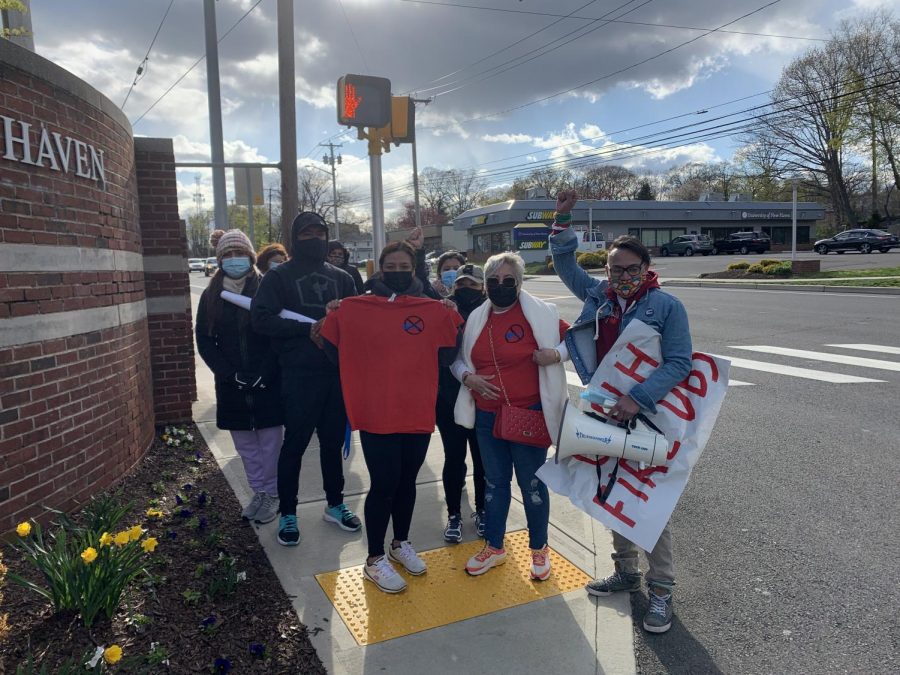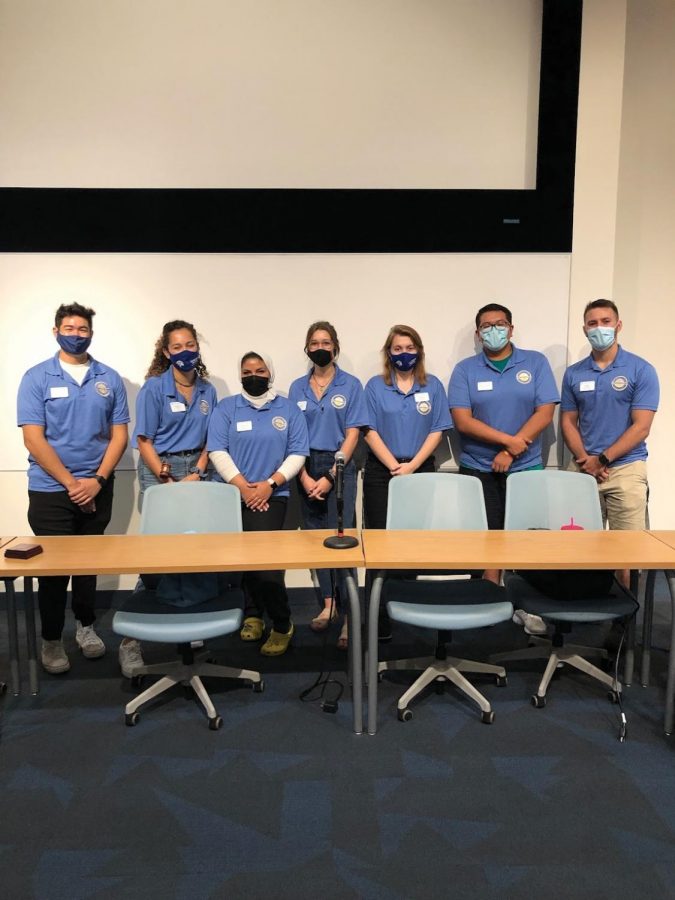On Feb. 11, 2014, the Political Science Organization hosted a discussion on the Prison Industrial Complex in the Alumni Lounge, led by assistant professor of political science Chris Hayes.

Director of Experiential Education William Carbone, English Department professor Dr. Randall Horton, Psychology Department professor Dr. Amory Carr and Department of Education assistant professor Dr. Amanda Bozack responded to a series of questions about the United States’ prison industrial complex and offered their views on the controversial topic.
The discussion was split into sections, in which the faculty and audience could respond and ask questions to the panel.
The first question inquired as to what a prison industrial complex is. As Hayes explained, the prison industrial complex refers to the rapid expansion of the U.S. inmate population in relation to the political influence of private prison companies and businesses that supply goods and services to government prison agencies. This includes corporations that supply prison labor, construction companies, surveillance technology vendors, lawyers and lobbying groups, to name a few.
Carbone expanded on this description, stating that the current prison industrial complex in the U.S. stems from an unprecedented growth in prison population during the 1980s and 90s following the war on drugs. This led right into the second and third questions, which asked how the U.S. compares with other countries on their incarceration rates and the causes of the prison industrial complex.
“I don’t think this happened by accident,” Carbone said. “It was by deliberate policy choices.”
According to Carbone, drug arrests prior to 1980 were only about 200 for every 100,000 people. By 2000, the number of arrests jumped to 500 or more. Carbone attributes this increase to the policy choices adopted by the nation, stating that the U.S. could have treated drugs as an education or health issue, but instead turned it into a public safety war. Additionally, by cutting things like good time and introducing mandatory minimums for drug convictions, inmates are staying in prison longer, resulting in overcrowding, the need for more facilities, and the opportunity for the private sector to benefit from high crime rates.
One need only look at Connecticut for an example. Carbone stated that there were only 3,500 people behind bars in Connecticut in the 70s, there were 3,500 people behind bars; today, there are over 17,000. In the 80s, when the population started to go up, 11,000 more prison beds were built throughout the state, and today there are more employees in the department of corrections than were inmates in the 80s.
“When you build them, there’s this pressure to fill them,” Carbone said.
“[The prison industrial complex] really relates to this very cynical view of public policy in effect being over influenced by people who have a profit of interest,” Carbone added. “It’s the growth of what is perhaps the least effective response to the event of crime.”
If the number of people caught and convicted of drug offenses or controlled substances or illegal immigration altered the number of persons arrested, this may reduce the need for correction facilities, something private companies would not support given their reliance on free labor.
Compared to other countries, Carbone continued, the growth of the U.S. inmate population over the decades is drastic. In recent years, there are approximately 700 incarcerated per 100,000 people. This number trumps countries like the United Kingdom, Israel and Canada who have 148, 209 and 107 incarcerated people per 100,000, respectively.
Bozack provided the audience with examples of how the war on drugs has influenced the inmate population growth within the country.
According to Bozack, when the war on drugs began, only two percent of the U.S. population believed there was a problem with drugs. By mid-1990s, it had been hyped up to the point where over 60 percent of people thought drugs were a huge issue. Since 1970, the number of people incarcerated in the U.S. has risen by 600 percent; most of those are nonviolent offenses related to drugs.
This relates to what Horton called, “feeding off the public’s fear.”
In looking at the war on drugs as a cause of the prison industrial complex, Horton also emphasized that race plays a big role as well. In understanding why a majority of incarcerated persons are minorities, one needs to look back to the post-Civil War era and the Civil Rights Movement, where black codes and Jim Crow laws resulted in the segregation and fear of people of color. The fear of African-Americans fighting for their rights can be linked to the current fear of drugs permeating around the nation.
“This is an issue of race and racism, and segregation and power,” added Bozak. “It is a system that, if we don’t know about it and choose to act on it, we are complicit in it.”
Bozak additionally revealed a statistic that “the U.S. currently imprisons a larger percentage of its black population than South Africa did at the height of apartheid.”
Former U.S. House of Representatives member Chris Shays responded from the audience by stating that race may not be the predominating factor in incarcerations; rather, a combination of family structure, poverty and a flawed education system was to blame. He argued that, race or not, raising a child under these strenuous circumstances could lead to incarceration.
Audience member Dr. Elizabeth Christian of the communications department countered by saying race cannot be discounted, regardless of circumstance.
“If we incarcerated middle class white kids taking prescription opiates and put them in prison at the rate that we do poor predominately minority kids, this would be a problem that no one in this room would be arguing about,” said Christian. “It would be a national crisis. So, to discredit that race is a predominant factor in this argument, I don’t know how you can do that.”
Carbone agreed that there are many factors that bring people into the prison system, income and family structure being several.
One point stressed by Bozak was that the school to prison pipeline also contributes to high incarceration rates. By misinterpreting a zero tolerance policy and criminalizing student behavior that has historically been deemed normal behavior of children, schools issue school suspensions and expulsions. For the students that do return, there is not an adequate effort made to reintegrate them back into the school system, she said.
Overall, the panelists saw the prison industrial complex as an ineffective solution to social problems such as homelessness, drug addiction and literacy.
Political Science Organization Vice President John Miolene reflected on the presentation’s message. “I think it is important to note the complexity of the prison industrial complex as well as all if its important factors. Every component of the prison industrial complex is influenced by the other components. You can’t simply discuss one component without discussing the others. It’s also important to note the controversy and sensitivity attributed to some of these components within the prison industrial complex. It was apparent with the somewhat heated exchange between some of the panelists and the audience. Overall, I feel the discussion was a success and shed very important light in the complexity of the prison industrial complex,” he said.
The next panel discussion will be held Monday, March 10 at 5 p.m. in the Alumni Lounge, and will discuss the rising political and economic inequality in America.












